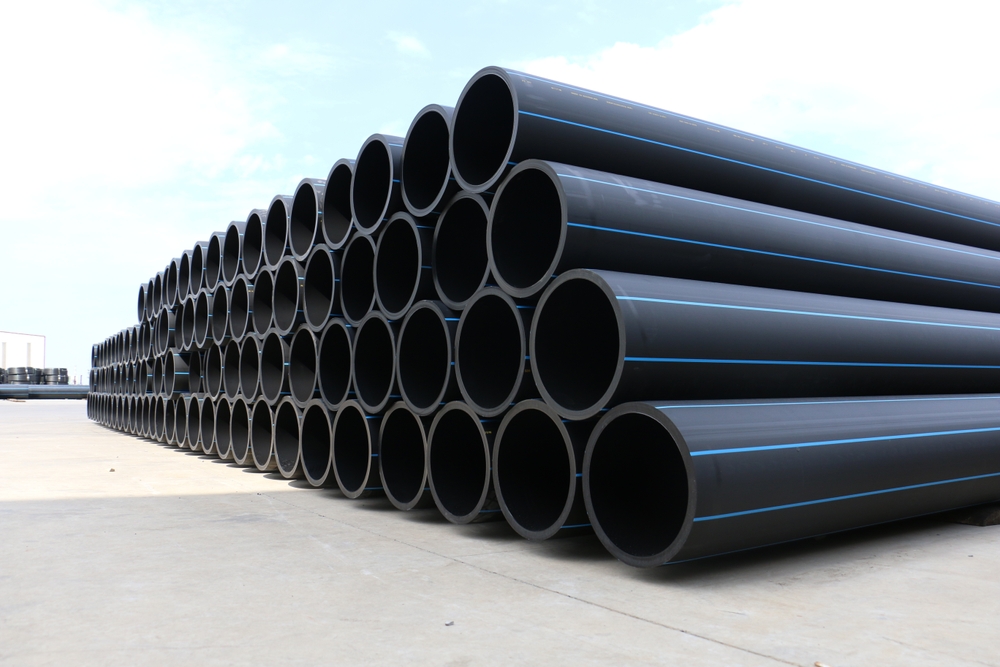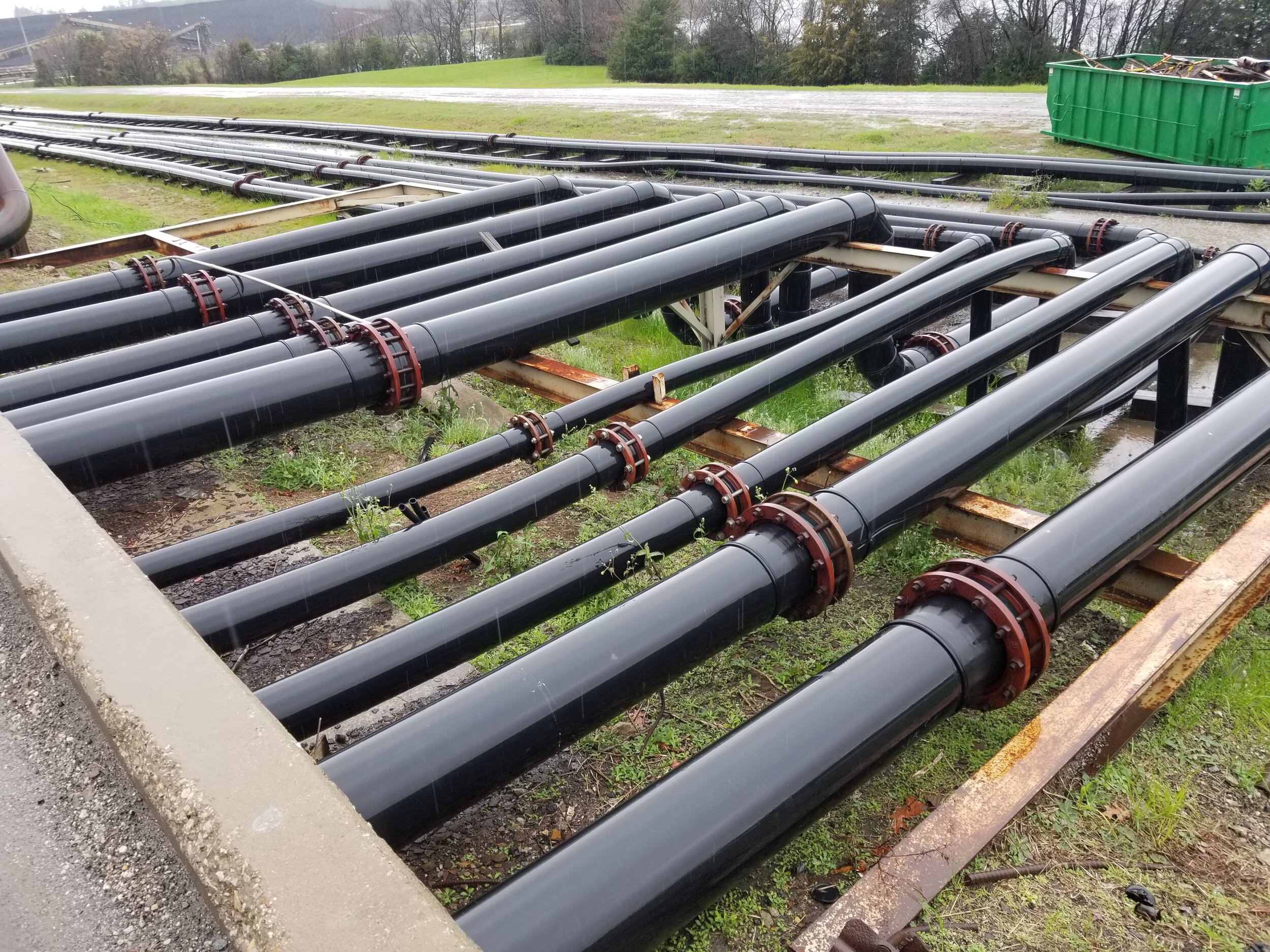Pipe Manufacturing Midland TX: From Raw Material to Finished Pipe
Explore the Manufacturing Process Behind High-Quality HDPE Pipe and Its Applications
The manufacturing procedure of top notch HDPE pipes is elaborate and systematic. It begins with the selection of resources that enhance efficiency. Following this, ethylene goes through polymerization to create material, which is after that formed with extrusion. Quality control is paramount, guaranteeing that the last item fulfills rigid criteria. Nevertheless, the trip of HDPE pipelines doesn't end with production. Their applications throughout different industries disclose a broader importance worth taking a look at.
Comprehending HDPE: Characteristics and Advantages

High-density polyethylene (HDPE) is a versatile thermoplastic known for its toughness and resistance to different environmental aspects. This material shows superb tensile strength, making it appropriate for requiring applications. Its low-density framework adds to a lightweight product, assisting in ease of handling and installation. HDPE also showcases remarkable resistance to chemicals, which decreases degradation when subjected to severe compounds.
The product's reduced dampness absorption further improves its longevity, making it ideal for use in pipes and storage containers. Additionally, HDPE is resistant to ultraviolet (UV) radiation, guaranteeing that items preserve their integrity even when revealed to sunshine. Its versatility allows for the production of complex shapes without compromising stamina. The environmentally friendly nature of HDPE, typically obtained from recycled products, contributes to its appeal, promoting lasting techniques in manufacturing. Overall, these residential properties and benefits make HDPE a preferred selection for different commercial and consumer applications.
Raw Product Option for HDPE Production
The option of basic materials for HDPE production is important to confirm the final product fulfills the wanted specs and quality requirements. High-density polyethylene (HDPE) is mainly produced from polymerized ethylene, stemmed from nonrenewable fuel sources such as natural gas or unrefined oil. The high quality of these feedstocks considerably influences the mechanical and thermal buildings of the final HDPE.
Ingredients likewise play a considerable duty in improving HDPE's performance, consisting of anti-oxidants, UV stabilizers, and colorants, which enhance sturdiness and resistance to ecological aspects. The option process need to consider not only the chemical composition of the raw materials yet additionally their handling characteristics to ensure effective production.
In addition, the sourcing of basic materials ought to prioritize sustainability and compliance with environmental laws, as accountable methods are crucial in today's market. Inevitably, cautious basic material selection lays the foundation for creating top notch HDPE pipes ideal for diverse applications.
The Extrusion Refine: Shaping HDPE Pipe
The extrusion process plays a crucial role in forming HDPE pipelines, starting with careful material preparation strategies that assure perfect flow and uniformity. Similarly crucial is the style of the die, which directly affects the final dimensions and surface high quality of the pipeline. Together, these factors contribute considerably to the performance and top quality of HDPE pipe production.
Material Preparation Strategies
Reliable production of HDPE pipes starts with meticulous product preparation strategies, particularly the extrusion procedure. Throughout this stage, high-density polyethylene material is first dried out to remove moisture, ensuring optimal circulation qualities. The resin is after that fed into the extruder, where it undertakes home heating and melting, transforming into a viscous state. This heating process is thoroughly regulated to preserve the material's honesty and efficiency. The liquified HDPE is compelled via a die, shaping it right into a continuous pipe kind. Proper temperature monitoring during extrusion is crucial, as it straight influences the material's residential or commercial properties and the end product quality. When formed, the HDPE pipe is cooled down and reduced to defined sizes, prepared for succeeding handling and applications.
Die Style Value
Accuracy in die design plays an essential role in the extrusion procedure of HDPE pipes. The die functions as the final shaping device, directly influencing the pipeline's dimensions, wall surface density, and surface coating. A properly designed die warranties uniform product flow, reducing issues such as abnormalities and weak points. The geometry of the die have to be optimized to suit the specific residential or commercial properties of HDPE, including its thickness and thermal actions during extrusion. Additionally, the cooling rate of the product as it travels through the die can markedly influence the pipe's structural integrity. Investing in innovative die modern technology is vital for makers aiming to produce high-quality HDPE pipes that meet market criteria and customer assumptions.
Quality Assurance Steps in HDPE Manufacturing
Numerous elements influence the quality of HDPE pipe manufacturing, efficient top quality control procedures are critical to assure uniformity and dependability in the last product (American Plastics HDPE Pipe Manufacturing). Key quality assurance practices consist of rigorous product assessment, verifying that the raw polyethylene satisfies recognized standards for pureness and density. Throughout the extrusion process, criteria such as temperature level, pressure, and cooling time are very closely kept an eye on to preserve dimensional accuracy and structural honesty
On top of that, post-production screening is crucial; suppliers often carry out hydrostatic examinations to analyze the pipeline's strength and resistance to stress. Visual inspections for surface area problems better enhance quality control. Qualification from relevant criteria organizations, like ASTM or ISO, provides an additional layer of reliability. By applying these comprehensive quality assurance procedures, manufacturers can minimize problems, enhance performance, and make certain that the HDPE pipes meet the details needs of various applications, eventually leading to customer fulfillment and count on in the product.
Applications of HDPE Pipe Across Industries
HDPE pipelines are used across various markets due to their longevity and flexibility. In water distribution systems, they assure efficient delivery, while in wastewater administration, they provide trusted remedies for waste transportation. Furthermore, farming watering networks benefit from HDPE's resistance to rust and versatility, making it an optimal selection for modern-day farming techniques.

Water Distribution Systems
A substantial number of sectors depend on high-density polyethylene (HDPE) pipelines for reliable water circulation systems. Recognized for their durability and resistance to corrosion, HDPE pipelines are commonly utilized in community water networks, agricultural watering, and commercial applications. Their lightweight nature helps with very easy handling and installation, minimizing labor expenses and time. Furthermore, HDPE pipes can suit numerous pressure degrees, making them appropriate for both low and high-pressure systems. Midland TX HDPE Pipe Fittings in Stock. The adaptability of the product permits for seamless combination right into existing framework, minimizing the need for comprehensive excavation. Additionally, HDPE's resistance to chemical leaching guarantees that the water delivered stays safe and clean, making company website it a suitable selection for preserving the high quality of potable water across numerous markets
Wastewater Management Solutions
Efficient water circulation systems additionally lead the method for innovative wastewater administration services, where high-density polyethylene (HDPE) pipelines play a substantial duty. Renowned for their toughness and resistance to corrosion, HDPE pipelines are ideal for delivering wastewater in different settings. Their adaptability permits simple installation in complicated environments, minimizing the requirement for extensive excavation. Additionally, HDPE's smooth indoor surface lowers friction, enhancing flow rates and performance. These pipes are also immune to chemical leaching, making sure that contaminants do not jeopardize the surrounding setting. Industries, municipalities, and treatment centers progressively rely upon HDPE pipes for their reliability and longevity, making them a preferred choice for modern-day wastewater management systems. This versatility emphasizes the critical relevance of HDPE pipes throughout numerous applications.
Agricultural Watering Networks
Agricultural irrigation networks profit substantially from making use of high-density polyethylene (HDPE) pipelines, which supply effective and trusted water delivery to crops. HDPE pipelines are lightweight, making them very easy to deliver and install, while their versatility enables various configurations in diverse surfaces. These pipelines demonstrate excellent resistance to rust, chemicals, and UV radiation, guaranteeing durability in severe farming atmospheres. In addition, their smooth interior surface decreases rubbing loss, enhancing water flow and minimizing power costs connected with pumping. The long life of HDPE pipes, usually surpassing half a century, adds to lower Full Article maintenance and substitute expenditures. As a result, farmers significantly rely upon HDPE pipes to improve irrigation performance and advertise sustainable agricultural techniques, inevitably leading to improved crop returns and source conservation.
Future Fads in HDPE Pipeline Technology
As the demand for sustainable and reliable infrastructure grows, developments in HDPE pipeline modern technology are poised to change numerous industries. Emerging fads include the assimilation of wise technologies, such as sensing units and IoT capabilities, which assist in real-time monitoring of pipe conditions, lowering upkeep prices and avoiding leakages. Furthermore, the development of advanced production strategies, such as 3D printing, is making it possible for the production of facility, tailored pipe designs that accommodate specific project needs.
Additionally, the concentrate on recycling and circular economic situation techniques is driving the advancement of HDPE pipelines made from recycled products, improving sustainability. Enhanced jointing approaches, such as electro-fusion and mechanical fittings, are likewise enhancing setup performance and dependability. The expanding focus on environmental laws is pushing producers to adopt greener manufacturing processes, making certain that HDPE pipelines not only meet industry criteria but likewise promote a more sustainable future for framework development.
Often Asked Concerns
How Does HDPE Contrast to Various Other Plastic Products?
HDPE outperforms numerous other plastic products relating to durability, chemical resistance, and flexibility. Its low density and high tensile strength make it excellent for various applications, typically exceeding alternatives in both performance and longevity.
What Are the Environmental Influences of HDPE Manufacturing?
The ecological effects of HDPE manufacturing include greenhouse gas exhausts, power consumption, and prospective contamination from producing procedures. Furthermore, improper disposal can cause soil and water contamination, increasing worries concerning long-term environmental effects.
Can HDPE Piping Be Reused?
Yes, HDPE pipelines can be reused. Lots of centers approve utilized HDPE for processing, transforming it into new products. This recycling contributes to sustainability initiatives, reducing plastic waste while saving resources and energy in the manufacturing cycle.
What Is the Life Expectancy of HDPE Pipes?

Just How Do Temperature Variants Impact HDPE Pipeline Efficiency?
Temperature level variants greatly impact HDPE pipeline performance, impacting flexibility and toughness. Heats can lead to softening, while low temperatures may create brittleness, inevitably influencing the pipeline's sturdiness and viability for different applications in diverse environments.